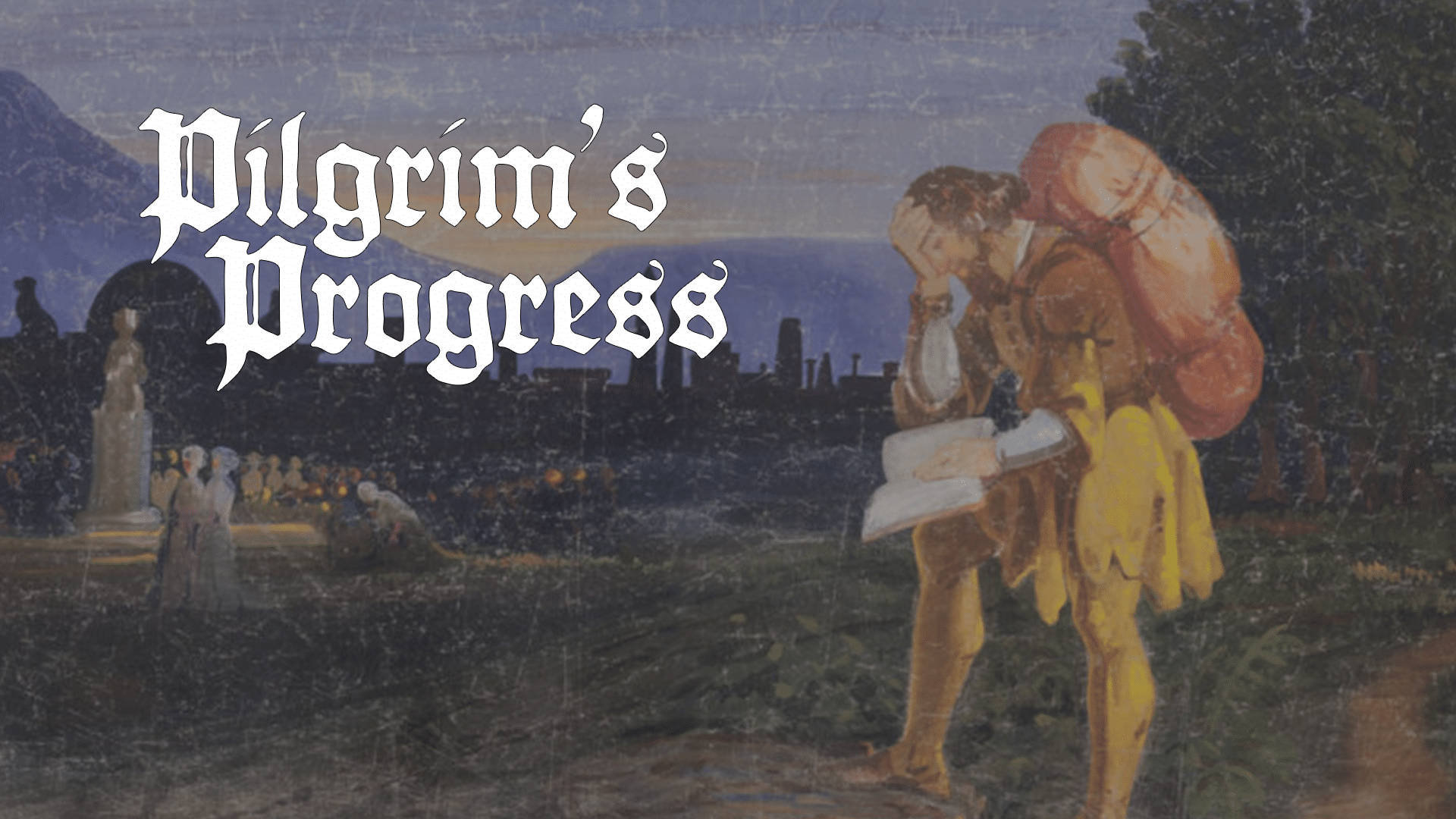What manner of thing is Pilgrim’s Progress? Clearly it is a work of literature—indeed, a powerful one—but what kind of literature is it? The book is surprisingly difficult to classify, but several observations are in order.
To begin with, Pilgrim’s Progress is a narrative. It tells a story. It is written mainly in prose, though it has bits of verse scattered here and there. One might be tempted to think of it as a novel, but it precedes the development of the modern novel in English. It is more closely related to Medieval romances such as Thomas Mallory’s Le Morte d’Arthur.
Like those romances, Pilgrim’s Progress focuses upon a heroic figure (actually multiple figures, since the work is in two parts). Instead of aiming for realism and verisimilitude, the tale incorporates fantastic elements. Furthermore, it is not a work of fiction, but a moral allegory.
Moral allegories were not new when Bunyan wrote Pilgrim’s Progress. Middle English allegories include an anonymous poem entitled The Pearl (probably from the same author as Sir Gawain and the Green Knight), Geoffrey Chaucer’s The Romaunt of the Rose (a partial translation of an older French work), and Piers Plowman by William Langland. Not forty years before Bunyan’s birth, English poet Edmund Spenser published The Faerie Queene, also a moral allegory in Early Modern English.
An allegory is a work of analogy that functions more-or-less as an extended metaphor. Persons, events, and objects in the story are intended to correspond to and represent persons, objects, and events in the real world. Some authors may provide a key that identifies these correspondences, but most do not. Trying to figure out what the specific items represent is half the fun of reading allegory. Discovering these correspondences opens up the deeper meaning of the work. Of course, a reader always faces the danger of trying to find resemblances and deeper meanings that were never intended by the author. Some readers even think that they discover correspondences in literature that was never meant to be read allegorically. Interpreters have known to read the Bible (unsuccessfully) this way.
In the case of Pilgrim’s Progress, however, Bunyan makes the allegory plain to the reader. For example, he provides a key to his meaning by the names he uses. His protagonist is Christian, who leaves the City of Destruction for the Celestial City. Christian encounters such characters as Evangelist, Obstinate, Pliable, Talkative, Worldly Wiseman, Lord Hategood, and the Giant Despair. He falls into the Slough of Despond, must climb the Hill Difficulty, pass through the Valley of Humiliation, and is imprisoned in Doubting Castle. Bunyan removes most of the guesswork from interpreting his allegory.
Besides being a narrative and a moral allegory, Pilgrim’s Progress is written as if it were a dream. This device was well known in previous English writing. Examples of such dream literature include The Dream of the Rood (in which a cross becomes a guide to the narrator), The Pearl, Langland’s Piers Plowman, and John Clanvowe’s The Cuckoo and the Nightingale. By presenting his moral allegory as a dream, Bunyan was following good literary precedent.
Pilgrim’s Progress is a narrative, that is, a story, and Bunyan is the storyteller. The story that he tells is essentially a quest, though it begins as more of an anti-quest. A quest is a story in which the hero must leave home to gain something, and that’s really the big story of Pilgrim’s Progress. In the first part, Christian leaves the City of Destruction to gain the Celestial City. In the second part, Christiana and her children embark on the same quest, and they are aided by the hero, Mr. Great-heart.
The story, however, does not begin as a quest to gain something, but to lose something, much as Frodo sets out not to find a magic ring but to destroy one. Christian bears a great burden, and he is desperate to be rid of it. He sets out initially to seek relief from this crushing weight, but he shifts his attention to the goal of reaching the Celestial City. The fact that he is seeking to lose something—to get rid of it—is what makes Pilgrim’s Progress initially an anti-quest.
In sum, Bunyan’s work sits at the junction of several literary elements. It combines moral allegory and dream literature in a narrative that has a quest (and anti-quest) for its plot. In none of these elements was Bunyan a pioneer. All had been done, and done well, in English literature before him. Bunyan’s main contribution lay in applying these devices to an Evangelical, Protestant, and uniquely Puritan vision of the life of faith.
What exactly is the shape of the spiritual quest that Bunyan envisages? Answering that question is essential to understanding Pilgrim’s Progress, and getting an answer depends upon grasping the story as a whole. Consequently, what I propose to do next is to provide a summary of the overall narrative with at least its principal characters. That summary will allow readers to see the shape of the life of faith as Bunyan imagined it to be.
This essay was originally posted here and is republished by permission.




